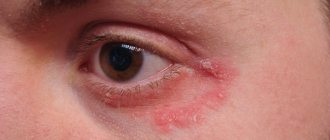March 21, 2019
Do you know that skin is an organ? And this organ is the largest in humans, which means it is more susceptible to adverse effects than others. The branch of medicine that studies the skin, its structure, functioning, protection, as well as hair and nails, which are appendages of the skin, is called dermatology (from the Greek words “derma” - skin and “logos” - study). A dermatologist specializes in the diagnosis, treatment and prevention of diseases and pathologies of the skin, nails and hair.
Subtleties of the profession
The doctor deals not only with skin diseases, but also with the treatment of infections, hereditary diseases, as well as tumor diseases and various pathologies. He examines patients, helps teenagers get rid of acne, issues certificates for swimming pools, determines skin type and gives recommendations for skin care. In his work, a specialist must collaborate with doctors in other fields: pediatricians, immenologists, infectious disease specialists, allergists and others.
If we summarize all the areas of activity of this specialist, we can get a clear definition. A dermatologist is a doctor whose main specialization is human skin, its structure and functions.
When should you visit a dermatologist?
As a rule, a dermatologist is visited in cases where the symptoms of the disease are already clearly visible and cause discomfort to the patient. Most skin diseases can be mild or unnoticed and then progress to more complex forms. Unfortunately, in such cases, even a highly qualified specialist cannot always restore the epithelium or nail plate completely. Therefore, any appearance of rash, red spots, dryness or itching is considered a reason to consult a dermatologist. Let's take a closer look at those symptoms that clearly indicate the need to visit a doctor.
Symptoms for which you should visit a dermatologist:
- Spotted rash. It can cover different parts of the body, sometimes becoming peeling. As a rule, it acts as a side effect of other, more serious diseases: psoriasis, allergies, seborrhea, lichen and others.
- Rash with blistering or blistering. Such a rash indicates an inflammatory process and may be a consequence of serious illnesses. It is highly not recommended to treat this on your own.
- Itching in any part of the body, including the genital area.
- Small or large pustules on the body or scalp.
- Increased dryness of the skin. It requires professional treatment, and not cosmetics, as it also requires a more detailed study of the causes. If such dryness is accompanied by severe peeling, a visit to the doctor is required.
- Increased oiliness of the skin, including the scalp.
- The appearance of ulcers and erosion.
- Changes in skin color, appearance of light or dark spots.
- Changes in the structure and color of the nail plate, inflammation around the nail.
Most of these symptoms do not cause concern to the patient. Meanwhile, even darkening of the nail can indicate the initial stages of psoriasis, a disease that is extremely difficult to treat. Self-medication of skin diseases, like any other, is often very expensive for the patient. Even ordinary acne needs to be treated by a specialist, since it has its own cause, which can be found out after tests and a professional examination. If you detect any suspicious changes on the skin and its appendages, it is better to visit a dermatologist. This way, the patient will receive the help he really needs in a timely manner.
In addition, a preventive examination by a dermatologist is mandatory for all doctors, workers in the service sector, catering, and the food industry.
What diseases should you contact him for?
As we have already understood, a dermatologist deals with a fairly wide range of problems. You can contact him if you are worried about a rash on your body, problems with your hair, or severely brittle nails. After the tests, the specialist determines the cause of the disease, refers to a venereologist, trichologist, or develops treatment methods himself.
A dermatologist is consulted with the following diseases:
- Venereal diseases of the mucous membrane and skin. Such diseases are treated comprehensively, with the participation of several types of medications, a dermatovenerologist and other doctors. A number of these diseases include: genital herpes, syphilis, gonorrhea, chlamydia, trichomoniasis, genital candidiasis and others.
- Fungal skin diseases. Depending on the location, such diseases can be treated by a dermatovenerologist (if in the genital area), a dermatologist-trichologist (on the head) or a regular dermatologist.
- Purulent skin diseases. This includes any damage to the dermis and epidermis by purulent formations, these are: psoriasis, boils, hidradenitis, carbuncles, impetigo and others.
- Dermatosis and dermatitis.
- Anomalies in pigmentation, which include: spots of light or dark color, moles, freckles, birthmarks.
- Any type of lichen on the head, face, genitals and skin.
- Parasitic diseases. Among them: lice, scabies, demodicosis, leishmaniasis.
- Diseases of the scalp.
- Viral diseases of the skin (herpes, wart virus).
Since skin diseases are often a side effect of other diseases, a dermatologist often consults patients with other clinical pictures. In addition, the skin can be damaged by mechanical factors such as burns or trauma. In these cases, they also contact a dermatologist for proper restoration and control of scarring. With cosmetic problems, it is first of all better to contact a dermatologist, since cosmetologists often perform only symptomatic treatment, for example, facial cleansing.
Such methods are good only in the short term, but systematic treatment by a dermatologist implies getting rid of the cause itself and getting rid of the problem for a long time. In addition, an experienced skin doctor will tell you which procedures can be performed in a cosmetology salon, and which are best avoided. It is also better to work out a set of care products with your doctor so that your skin receives the care it requires.
Who are cosmetologists?
In Russia, such a specialty as a cosmetologist appeared relatively recently. Previously, only dermatovenerologists worked with skin problems, who initially had to undergo advanced training courses that lasted at least 3-3.5 months. Today, any doctor can become a cosmetologist. To do this, you will need to complete a residency within two years. After this, you can get a job at a medical center in this specialty or open your own cosmetology office. It is important to be able to distinguish a qualified cosmetologist with a higher medical education from hundreds of graduates of so-called “beauty institutes”. Such institutions accept students without medical education, their training does not last long, and the graduates, for the most part, do not have the proper competence. A real cosmetologist, whom you can contact with any dermatological problems, treats not only acne and warts and helps fight skin pigmentation. Such a specialist successfully fights infectious diseases of the skin, nails and hair. The need to remove moles causes great controversy. In fact, they should be dealt with by a dermatologist, but cosmetologists with higher medical education also have the right to do this, subject to a number of conditions - a separate office, complete sterility, preliminary consultation of the patient with an oncologist. Cosmetology is more in demand than dermatology, which is why technologies in this area of aesthetic medicine are developing much faster. Cosmetologists have many tools at their disposal to combat skin imperfections and dermatological diseases. This is modern photodiagnostic equipment, as well as laser devices, currents, everything that is needed for cryosurgery, and so on.
Allergist
In some cases, the dermatologist refers the patient to related specialists, one of whom is an allergist. A similar need arises in cases where conditions associated with hypersensitivity reactions to certain substances are suspected.
You should consult such a doctor when you suspect urticaria, atopic dermatitis or eczema. To confirm the allergic nature of the disease, the following may be prescribed:
- Skin tests (scarification, application, injection).
- Blood test for antibodies (specific immunoglobulins).
- Specific tests (latex agglutination, lymphocyte transformation).
There will be no doubt about the need to consult an allergist if, in combination with skin manifestations, the patient has signs of conjunctivitis, rhinitis or bronchial asthma. They are also caused by contact with substances, which a “narrow” specialist will help to identify.
General information
Skin is the organ of the human body that occupies the largest area. It performs important functions without which the organism’s existence in the external environment is impossible:
- Protection.
- Selection.
- Reception.
- Thermoregulation.
Immune reactions take place in the skin, water-salt metabolism and respiration, vitamin D synthesis, blood deposition and other important processes from the point of view of life are carried out. When diseases occur, one or more functions are disrupted and structural changes are observed in the affected organ.
As is known, pathological processes in one organ system have characteristic features, knowledge of which will be decisive in providing further assistance. This is when you need a doctor who treats the skin. This is not a generalist, but a “narrow” specialist with the competence to diagnose and treat relevant diseases.
How to see a doctor and treatment
You definitely shouldn’t put off or be afraid of a visit to a dermatologist. Some diseases of the dermis can be infectious or viral in nature, and such diseases should never be neglected. Timely contact with a specialist will reduce both the time for treatment and the risk of disease progression. At the first appointment, the doctor will examine the affected areas of the body; sometimes, in addition to them, examination of other parts may be necessary. It is also worth preparing for the fact that the dermatologist will ask questions about hereditary diseases, taking medications, and bad habits.
If a patient comes to the doctor already with a diagnosis, for example, he just wants to change doctor, it is worth taking care of the medical history from the previous medical institution. In most cases, in addition to a visual examination, tests will be required; most often the doctor needs:
- general analysis of blood, urine, stool;
- scrapings from the skin, nails or eyelashes (depending on the location of the lesion and the type of disease);
- immunoglobulin E (IgE);
- PCR diagnostics (analysis for skin infection);
- herpeviruses.
In addition to these, other types of tests may be prescribed if necessary to clarify the diagnosis. Sometimes, in order to accurately establish the cause of the disease, the doctor may write a referral to a doctor of a related specialization. For example, patients of a dermatologist are often examined by a gastroenterologist, therapist, or gynecologist. This comprehensive collection of information provides the best conditions for establishing the correct diagnosis and choosing treatment.
Treatment methods depend, of course, on the results of the examination and tests. Most patients require drug treatment; in this case, the doctor prescribes a complex of oral and external medications, sometimes a course of injections or droppers. The bulk of this treatment occurs at home as prescribed by a dermatologist. The patient only needs to occasionally undergo additional examination to adjust the treatment and use the medications at home.
Best materials of the month
- Coronaviruses: SARS-CoV-2 (COVID-19)
- Antibiotics for the prevention and treatment of COVID-19: how effective are they?
- The most common "office" diseases
- Does vodka kill coronavirus?
- How to stay alive on our roads?
In some cases, additional measures are required, such as blood transfusions, laser treatment, cryotherapy, ultrasound. All these procedures are carried out by a dermatologist or in special rooms. Surgical intervention is required very rarely; for example, in case of mycosis of the feet, the nail plate is removed; in case of dermatitis, it may be necessary to remove dead tissue. Most of the operations are performed by surgeons, and a dermatologist monitors the correct scarring of the skin and prescribes measures to prevent a new outbreak of diseases.
If cosmetic defects are identified, the doctor can refer the patient to a cosmetologist or prescribe treatment independently, or may recommend a complex of cosmetic services and local therapy. If the nature of the disease is undiagnosed, for example, with psoriasis, Dühring's disease, pemphigus, periodic visits to the doctor and a whole range of therapeutic measures are necessary. Unfortunately, there are still skin diseases that cannot be completely cured. In any case, compared to self-medication, a correct diagnosis and competent therapy will definitely not harm the patient.











